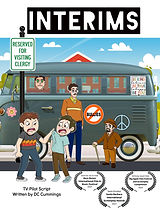Teaching Old Dogs New Tricks
- Dean Cummings

- Mar 4, 2018
- 3 min read
Ageism is all around us and sometimes we don't even know it. Advertisers know it. Media organizations know it. Workplaces deny it. Institutions avoid the conversation. I started a conversation today in the world of gerontology. I had a great time at the AGHE Annual Meeting and gained perspectives that will help my further research. For instance, neither the gerontology experts nor I looked at elder (40 plus year of age) local TV news photographers as displaced workers. Many are taking buyouts at 55 years of age.
Ageism in Local TV news is subtle because TV news sometimes seems like performance art when in reality is a series of tasks like any other job. Most people don't think about the thousands of people behind the camera, what they do and how long their career may last. Does it matter? It does because newsrooms full of one demographic does not represent the community they serve. Elder workers (I can't believe the gerontologist use 40 years of age as the demarcation age) are vulnerable to replacement or lack advancement opportunities. It will be extremely difficult for someone to go into local TV news today and expect to be working at age 55 and above. There are always exceptions to the rule and other conferences will stamp their feet and show off their examples. Okay, great...help the other markets and corporations with the issue of age, please!
Today, I gave a presentation about the impact the Multimedia Journalist has on ageism in the workplace of local television news. Not many people over 50 in a newsroom. Anchors don't count. Lots of recent college grads running around, by themselves, trying to get stories on the air. A newsroom culture dictates the news that is chosen and the amount of work that goes into the story. The MMJ doesn't have time, is given too many jobs to do, and the outcome is a skewed version of the world and a thin amount of substance. Kind of like eating at McDonalds, don't expect a product that is going to improve you. It's just food. The following is the abstract I submitted to the conference.
Television News corporations are changing their work roles to a "one-man band" method of production. The TV stations created the "multimedia journalist" to eliminate news photographers and editors. The intent is to lower production cost, and the result is a McDonaldization of the profession. Many television markets use young employees in a limited term capacity, expecting them to move up into higher markets or get out of the business. Salaries are stagnated and lowered while burnout rises. For experienced news photographers and reporters, the transition has been difficult. The older employee is expected to learn new technical tasks, work on their own and against their experience. Many are leaving the business and accepting corporate buyouts. This study surveyed multimedia journalists from around the country and found 7% of the multimedia journalists are over 36 years of age. The TV stations created the "multimedia journalist" to eliminate news photographers and editors. The experienced workers converted to the multimedia journalism model are struggling with the complexities of the new position. The multimedia journalist is expected to do a quality job in a shorter amount of time with no technical support from co-workers. Fifteen years ago, reporters had a little more time to get the story right. Now, with all of the advances in technology and social media, that time frame has been dramatically reduced. It 's hard to train an experienced journalist to be multi-skilled without de-skilling the profession. This paper utilizes labor process theory and actor-network theory to examine career longevity at local television news stations. Television news is entering the age of the "McJob, " and older workers are vulnerable unless they learn the new technologies and methodologies.








Comments